Aluminum Wire
Doug Stell, Electrical Engineer, BSEE, MS(EE) Manor 1305, Doug.Stell@outlook.com
Jan. 30, 2023, updated Sept. 4, 2024
There is little inherently wrong with Aluminum wire. The issues are the connections to it!
Disclaimer & Purpose
- I am am Electrical Engineer & teacher
- I am not an Electrician
- I have done a significant amount of residential work.
- This information is unbiased and informative.
- I am still learning, just a little ahead on this topic.
Purpose
- Make you more informed for better choices
- Help you avoid sub-standard work by contractors, which may increase your risk of fire
This is analogous to you putting money in the bank (investing in the bank) and your balance
increases as the bank pays you interest. In a capitalized loan, the roles are reversed and the bank is
investing in you. The bank expects you to pay back both the initial loan/investment and accrued
interest.
Issues With Aluminum Wire
- Incompatible coefficients of thermal expansion
- Creep & loose screws over time – poor connection
- Oxidation
- Aluminum oxide is an insulator – poor connection
- Galvanic effect of dissimilar metals (Al & Cu)
- Corrosion – poor connection
- Damage, low ductility – crimp, nick, pinch
- Hot spot & over-heating
- Malleability – compresses & deforms under pressure of a connection
- Poor connection
- higher resistance
- heat
- poorer connection
- Result: melting (plastic & wire), burning, thermal run-away, ultimately fire
The Proof
55 times more likely to have a fire with Aluminum wire.
Identifying the Problem
- Incompatible coefficients of thermal expansion
- Look at the color of bare wire sections attached to the neutral/ground bus bar.
- Look at the color of bare wire sections attached to the circuit breakers.
- Wires that are Copper color are OK.
- Wire of circuits that are silver / Aluminum color are of concern.
- There may be a mix of Aluminum and Copper wires, depending on the Amperage of the circuits.
Identifying the Problem
Warning Signs of Impending Failure
- Warm-to-touch face plates on outlets, switches
- Flickering lights
- Circuits that don't work, consistently or at all
- Discoloration, deformation
- Smell of burning plastic
- Insulation on wires and body of outlet or switch
Note: The problems not only progress over time, but the speed of progression increases over time. The end result is thermal run-away & fire.
Ting Sensor by Whisker Labs
- Senses arcing early
- Notifies you of a problem
- Does no turn off or identify circuit.
- Good alternative to Arc Fault Circuit Interrupting beaker replacement in existing boxes
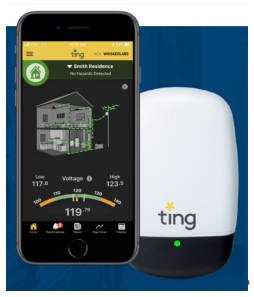
Repair Criteria
- Complete
- Every connection or splice to Aluminum wire in the home (no unapproved connectors & direct Aluminum-to-Copper connections)
- 50 – 100 boxes, 150 – 300 connections per house
- Permanent (There are temporary fixes.)
- Practical for use
- Irreversible:
- Preclude future actions and repairs from recreating the problem
Acronym Soup
- CU-only or Copper-only – no repair at all
- CU-AL, AL-CU - “Incomplete repair”
- Manufacturer marking, not CPSC-approved
- Copper-clad, Cu-clad – OK
- Copper coated aluminum wire
- COALR, CO/ALR - OK
- Underwriters Laboratory (UL) marking
- COPALUM - OK
- US Consumer Product Safety Commission marking
Two Parts of the Discussion
- 30 to 60 Amp, dedicated circuits with Aluminum wire.
- The good or better news first
- 15 and 20 Amp “branch” circuits with Aluminum wire.
- The bad news
- Remediation options
30 to 60 Amp, dedicated circuits with Aluminum wire
- Used for oven, cook top, clothes drier, water heater, AC, air handler, & breaker panel extensions.
- Most manors have this wire, regardless of age.
- Dedicated: Wire generally goes directly from circuit breaker to appliance.
- Few connections, one at each end of the circuit, not the hundreds for branch circuits
- This greatly reduces the scope of the problem and risk of fire.
- Most connections are to items made for use with Aluminum wire.
- Breakers, appliance receptacles, AC disconnects
- Stranded wire, less problematic than solid wire
- Newer homes use newer AA-8000 series alloy
- Mechanical properties more like Copper
- This Aluminum wire is still used for these circuits today.
- Only issues are with a few Aluminum-to-Copper connections at the appliance end of some circuits. Typically:
- Hard-wired oven or cook top with Copper cable
- Water heater at wall box end of armored cable.
- Splices in replacement breaker panel
- EV charging outlet setup, using the drier circuit
- Turns a dedicated circuit into an Aluminum branch circuit.
Unapproved Connectors
- No wire-nuts for Aluminum connections?
- Only Ideal #65 purple “Twister” or Marrette 63 wire nuts can be used , but not recommended.
- Purple wire-nuts are for temporary use only or
- Single Aluminum-to-Copper connections, i.e., ceiling fans & light fixtures.
- Anti-oxidation grease must be used.
- Not approved for connecting two+ Aluminum wires together, with or without a copper pig-tail
- Other types of wire nuts must never be used with Aluminum wire.
- UL-listing and Ideal's claims withdrawn
- Ideal #65 wire-nut and inhibitor are flammable.
- They are no better than ordinary wire-nuts.
New, Unevaluated Connectors
- WAGO 2273 Pushwire & 222 Cage Clamp
- New products, not yet evaluated by CPSC
- Manufacturer identified for Aluminum wire
Unapproved Connectors
- Push-in (wall-nut) connectors or “back-wired” connections to receptacles or switches.
- Not approved at all for Aluminum wire
- Have reliability and longevity issues, even for Copper wire.
Approved Connectors
- Can mix of Aluminum and Copper wires
- For 15 and 20 Amp circuits
- Wire up to 10 AWG
- AlumiConn 95125 and 95015 from King Industries
- $3.50 each
- Available since 2006
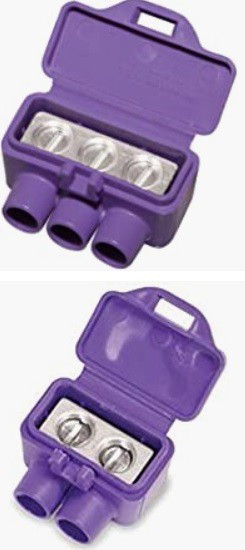
- Can mix of Aluminum and Copper wires
- For 30 to 60 Amp circuits
- For 14 AWG to 4 AWG wire
- ITE Polaris IT-4
- Morris 97102
- RVBOATPAT
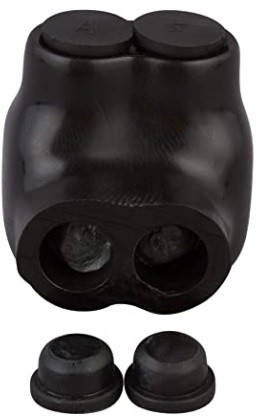
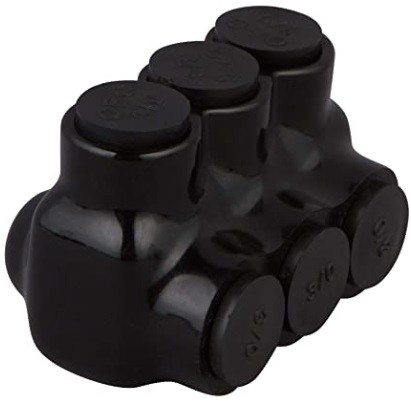
Approved, Uninsulated Connectors
- Morris Products 90xxx
- Crimp & screw connectors
- Amp Tyco COPALUN butt splice 277156-1 (10,000 lbs force for cold weld)
Must Follow Procedure
- Verify intended procedure with local inspector.
- Strip wire with a tool that does not nick the wire.
- Abrade Aluminum wire with #240 sand paper to remove surface oxide.
- Coat wire with non-combustible oxidation inhibitor.
- Abrade wire again with inhibitor on the wire.
- Insert wire into inhibitor-filled connector.
- Clean off excess inhibitor outside connector.
Installed Connectors
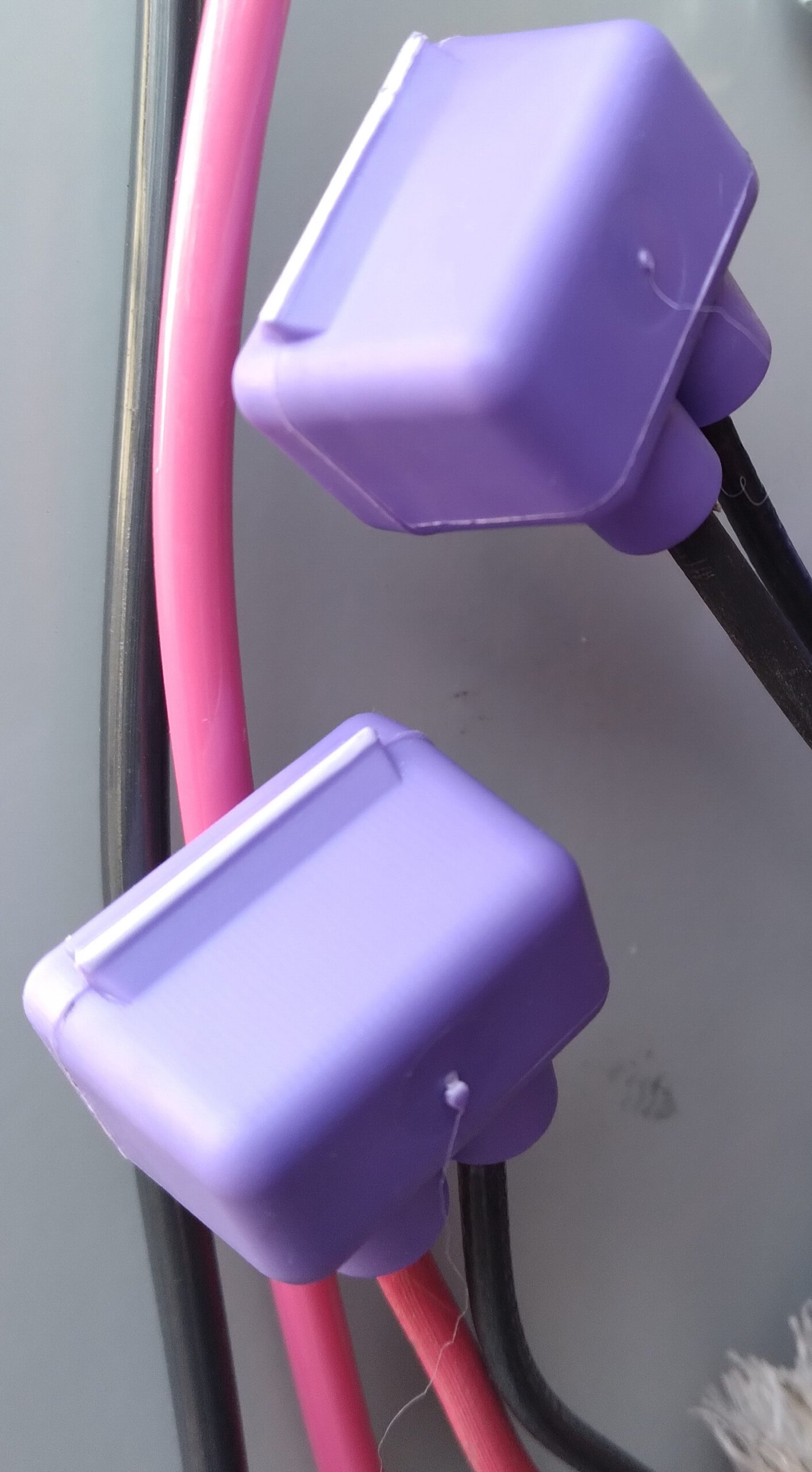
AlumiConn 15 Amp circuit 14 AWG wire
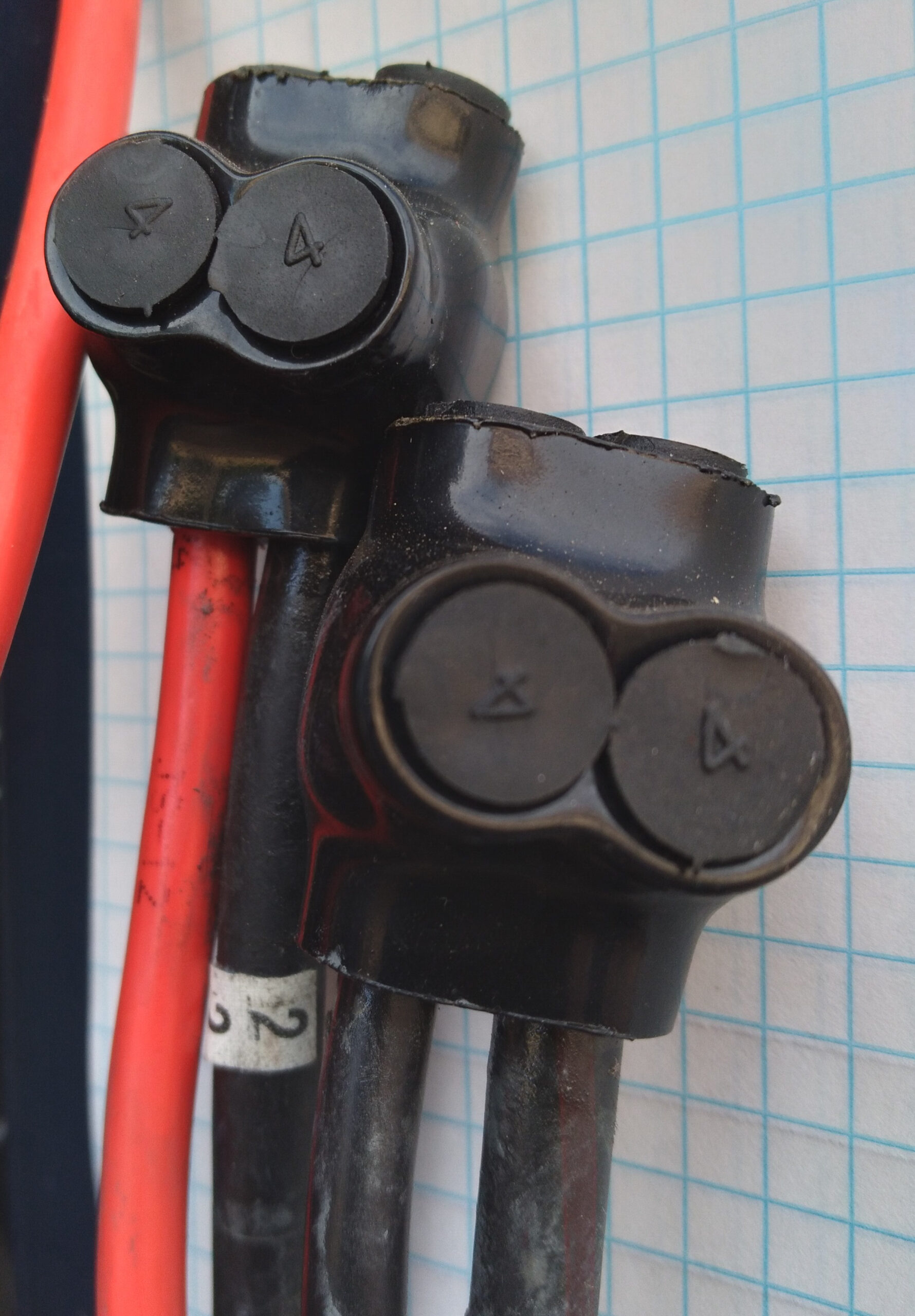
Morris or Polaris, 60 Amp circuit 4 AWG Aluminum – 6 AWG Copper
No-No's
- Never connect stranded Copper wire directly to Aluminum wire.
- Use an intermediate solid Copper wire, AlumiConn or Morris/Polaris connector.
- Never make a connection with more than one Aluminum wire, i.e., pass-through outlets
- Use a multi-port AlumiConn connector.
- Never use “push-in” connections.
Must I Repair 30-60 Amp Circuits with Aluminum wire?
- Unofficial opinion: If you do not need to repair 15-20 Amp branch circuits with Aluminum wire:
- Your risk level is low
- Off the insurance company's radar
- It's probably optional.
- Unofficial answer: If you do need to repair 15-20 Amp branch circuits with Aluminum wire:
- No if only repairing branch circuits
- Yes to certify a “complete” repair
- Most connections are to items not made for use with Aluminum wire
- Hundreds of connections: outlets, switches, ceiling fans, lights
- Solid wire, which is more problematic
- Tends to be older AA-1350 alloy
- Homes built, rooms added, and circuits added or rewired between 1965 and 1973 may contain Aluminum wire.
- Aluminum branch circuit houses have:
- 55 times more likely to have a house fire
- Increasing over time
- 40,000 electrical fires per year
- Twice that caused by Federal Pacific panels
- $2 Billion property damage per year
- Kill 3 people per day
- Possible deal-breaker on sale of home
- Uninsurable or insurable at very high premium
Repair Strategy 1
- Dual rated (arc fault & ground fault) breakers
- May sense a fault and trip before a fire starts.
- Now required by the newer NEC.
- Fires can start due to over heating only, without arcing or ground fault.
- Conclusion: Slightly helpful, but not a solution.
Repair Strategy 2
- Total remodel and rewire
- Cost prohibitive, unless done as part of a total remodel
- Total rewire from attic down through walls
- Wire must be pulled tight & secured away from the back of sheetrock
Repair Strategy 3
- Use “dual rated” CU-Al, AL-CU outlets & switches
- Some electricians simply believe manufactures ratings.
- Must have 8-32 brass screws, not 6-32, steel or plated screws
- Dual rated devices probably not CPSC approved
- Dual rated devices may not satisfy insurance company as an acceptable fix.
- Use CU-Al, AL-CU outlets & switches
- Considered an “incomplete fix,” because future replacement might use Copper-only hardware, recreating the original problem.
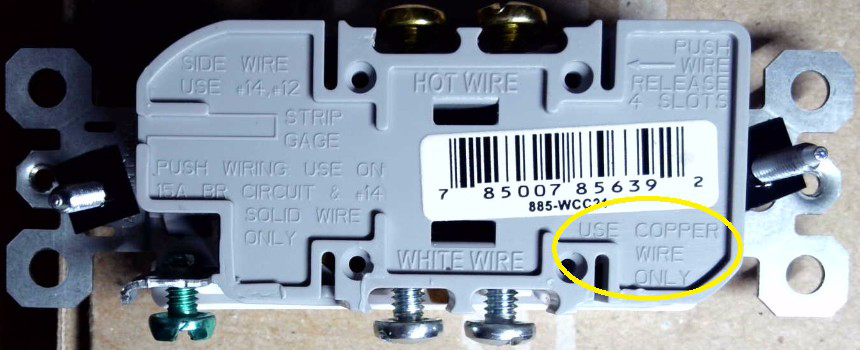
CO/ALR Hardware
Repair Strategy 4a
- “Pig-tailing” with AMP/Tyco/TE COPALUM connectors
- Available since the 1970s, difficult / impossible to find contractors today
- High capital investment by contractor for vew contracts
- Aluminum wire(s) removed from outlet and attached to COPALUM connector
- COPALUM crimp connector with heat-shrink tubing insulation (Must be trained & use a special tool.)
- Copper pig-tail attached between COPALUM connector and outlet
Repair Strategy 4b
- “Pig-tailing” with King Innovations AlumiConn connectors
- Aluminum wire(s) removed from outlet and attached to AlumiConn
- 2-port if there is one wire attached to each side of outlet
- 3-port if there are two wires (feed-through) attached to each side of outlet
- Copper pig-tail attached between AlumiConn connector and outlet
Pig-Tail with AlumiConn
- Feed-through configuration
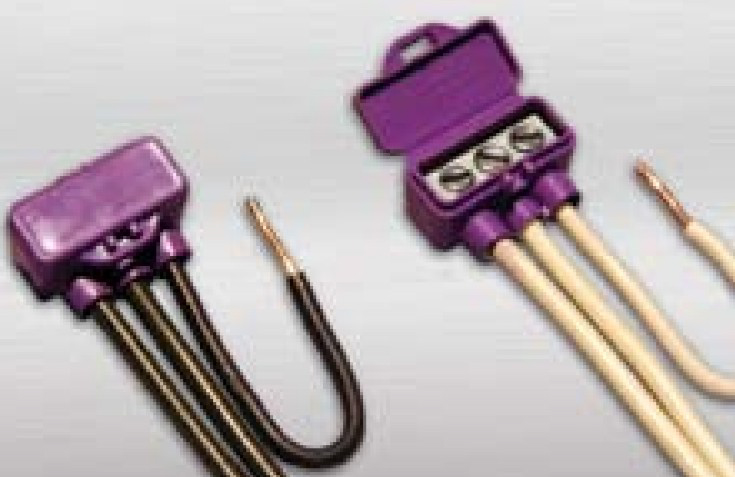
Tyco Electronics COPALUM Tools
Tyco Electronics COPALUM Tool
COPALUM Pig-Tail Splices
Pig-Tail with Crimp Connector
Space Issue with “Pig-tailing”
- Extra connectors and pig-tail wires may exceed allowable space criteria in electrical box
- Switch or outlet will protrude into the room ¼, ½, or ¾ inch.
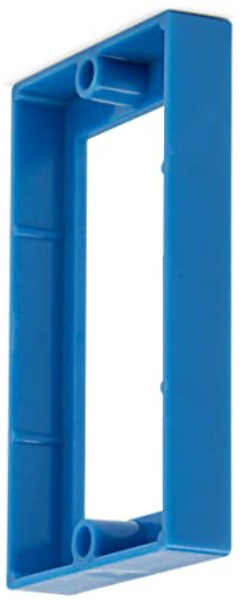
Space Issue with “Pig-tailing”
- Replace box with deeper or wider box.
- Sheet rock repair may be required
Priorities
- Heavily loaded 15 & 20 Amp circuits first
- Bathrooms, kitchen
- Heaters, hair driers, cooking devices, etc
- Must do all devices on circuits, as circuit may pass through other devices before reaching bathrooms or kitchen.
- Exterior, patio, garage, basement outlets
- All other 15A & 20A circuits
- Optionally, all point-to-point, 30+ Amp circuits.
Bottom Line
- Multiple methods and connectors may have be used in different location.
- All connections and terminations must be addressed.
- No wire-nuts of any type, any where on Aluminum circuits, including Ideal #65!
- All aluminum wires connected to terminals designed for aluminum wire.
- No direct aluminum-to-copper connections
- No direct aluminum-to-aluminum connections.
- No wirenuts of any kind.
- All aluminum wire connections made with proper technique – burnishing to remove oxide.
- All aluminum wire connections made to terminals approved for aluminum wire.
- All aluminum wire connections made with antioxidation grease.
- All aluminum wire connections made with specified torque
- AlumiConn – 15 inch-pounds
- Morris & Polaris – 35-45 inch pounds, depending on wire size
- Monitor your contractor for proper methods and workmanship.
2020 National Electrical Code
- Article 110.14, page 70-47, Electrical Connections:
- Because of different characteristics of dissimilar metals, devices such as pressure terminal or pressure splicing connectors and soldering lugs shall be identified for the material of the conductor and shall be properly installed and used. Conductors of dissimilar metals shall not be intermixed in a terminal or splicing connector where physical contact occurs between dissimilar conductors (such as copper and aluminum or aluminum and copper-clad aluminum), unless the device is identified for the purpose and conditions of use.
- Identified by whom? The manufacturer?
- Insurance companies generally follow CPSC 516, which has not been updated.
Comments, questions, and possibly answers
A Few References
- “Aluminum building wiring,” en.wikipedia.org/wiki/Aluminum_building_wiring
- “Repairing Aluminum Wiring,” U.S. Consumer Product Safety Commission (CPSC), Publication 516
- Repairing Aluminum Wiring – US Consumer Product Safety Commissoin (CPSC) Publication #515,” InspectAPedia
- “Do Not Use CR-Only, COALR or CU-AL Breakers, Electrical Outlets, Switches,” InspectAPedia
- Reducing the Fire Hazard in Aluminum-Wired Homes, J. Aronstein, Nov 25, 2911 update

